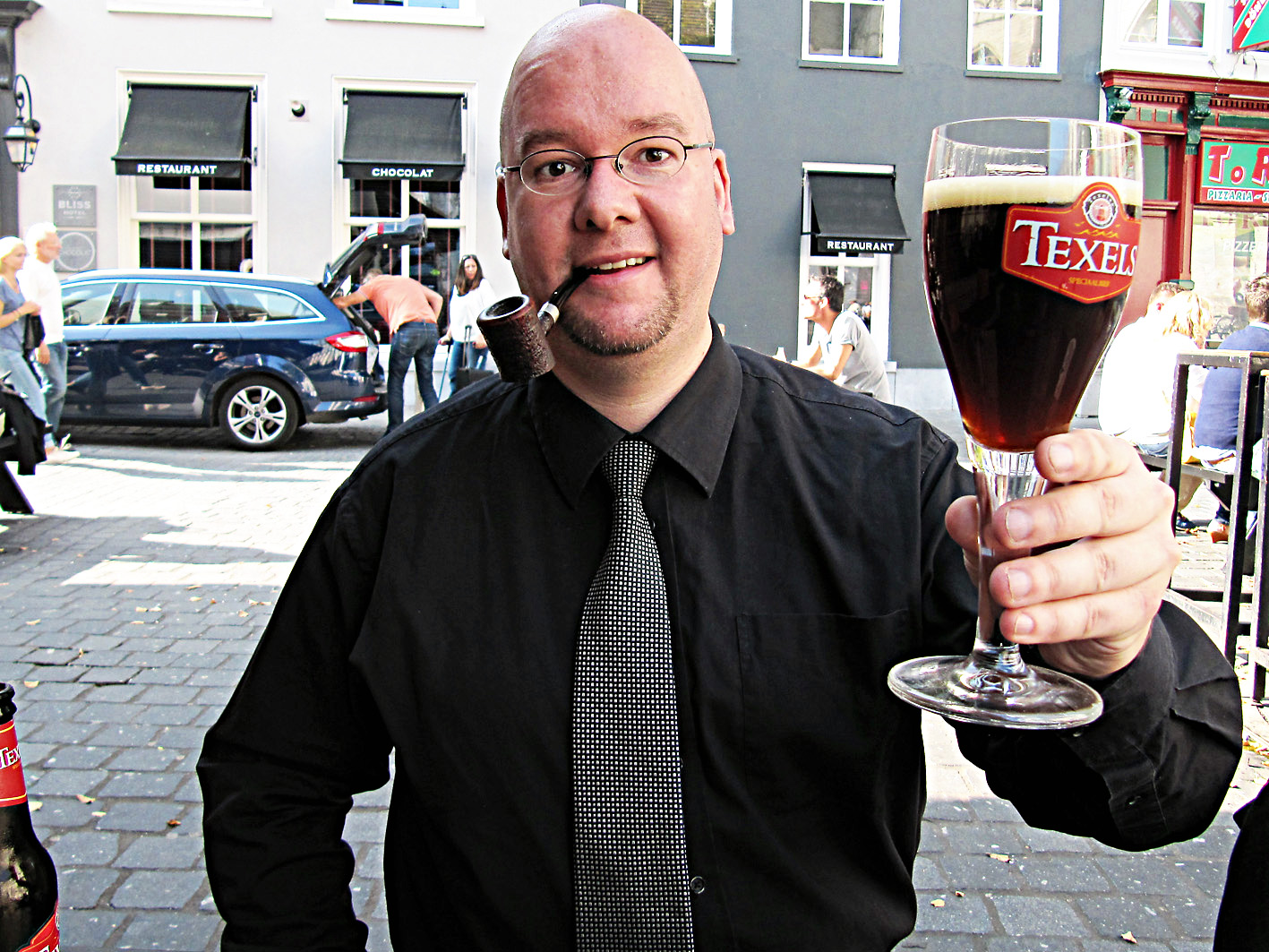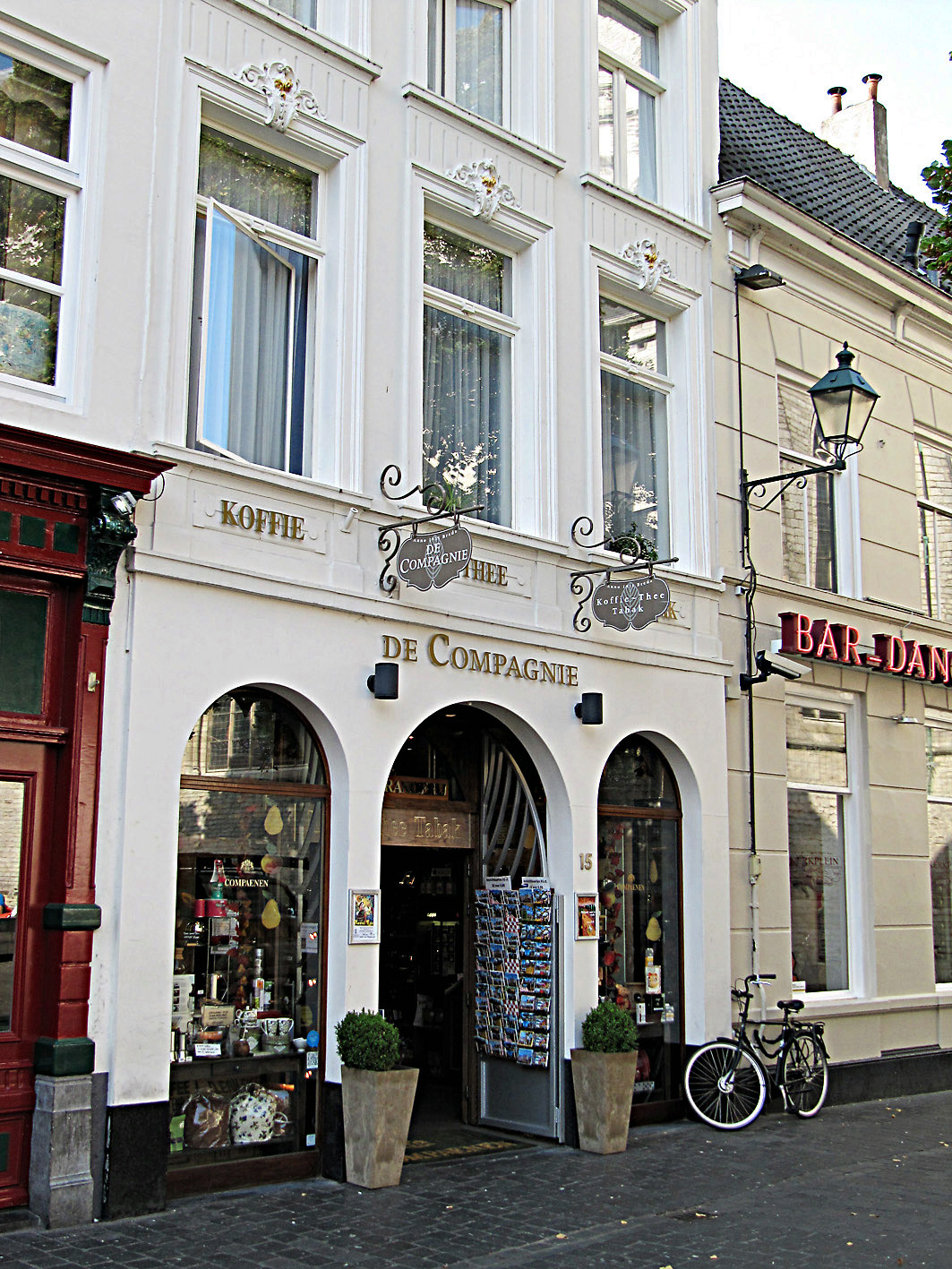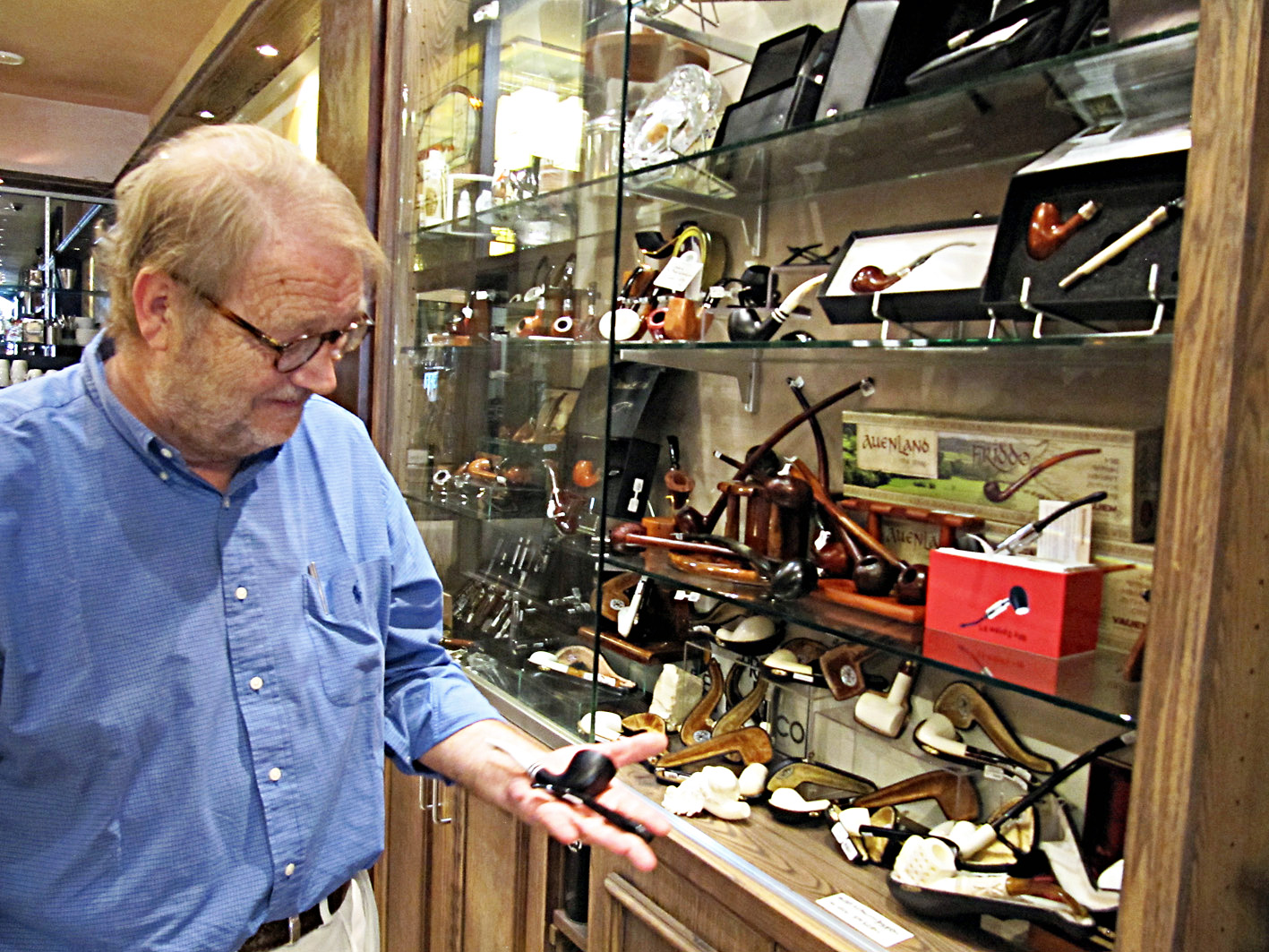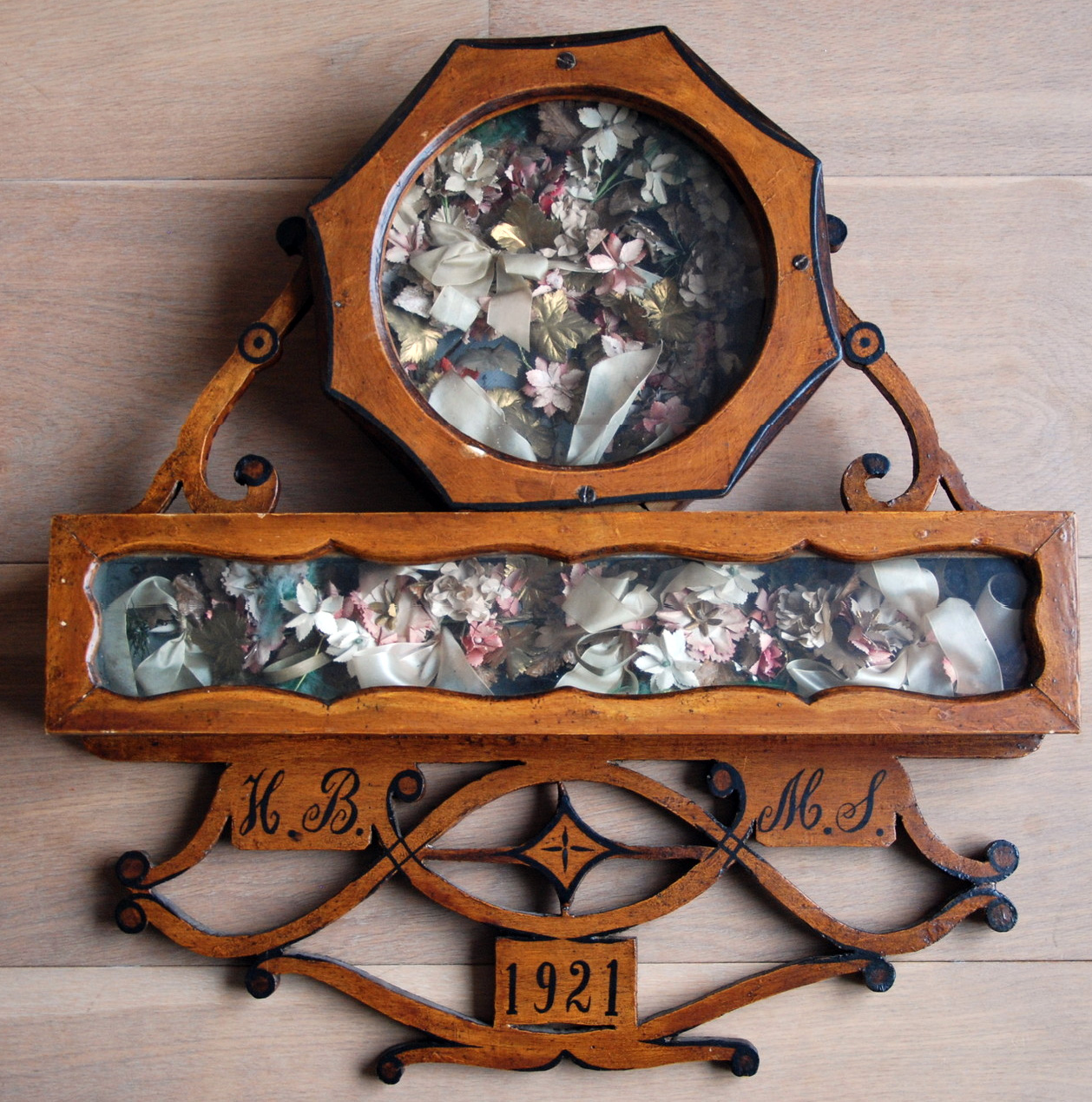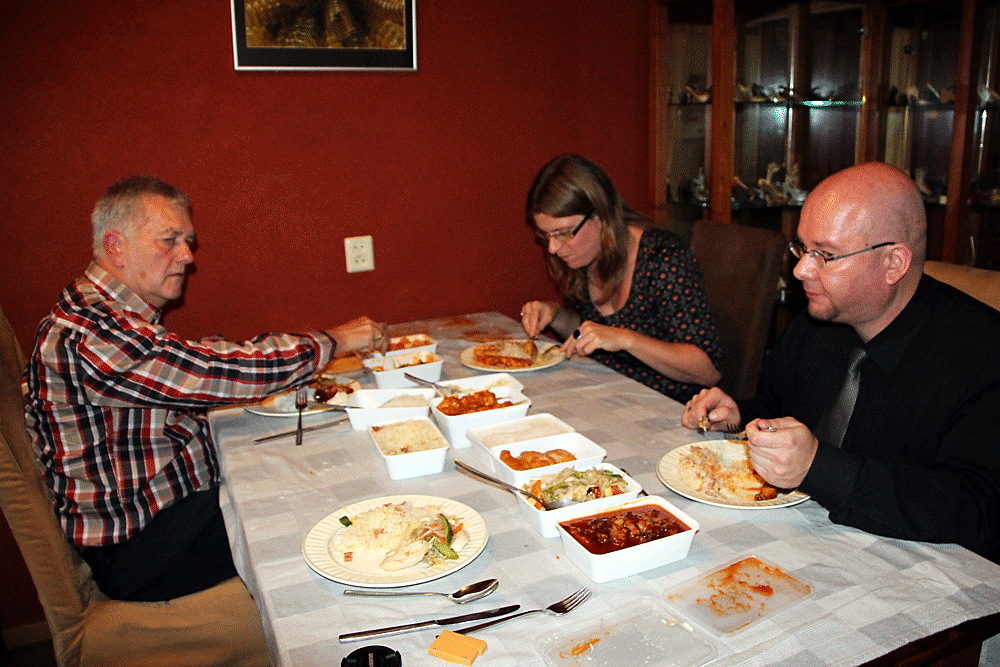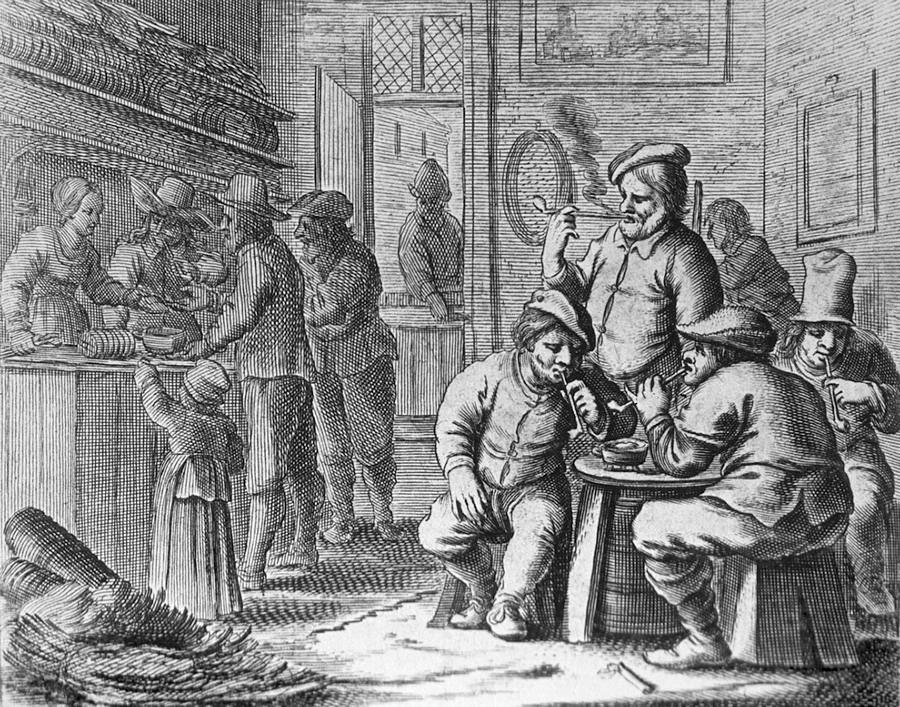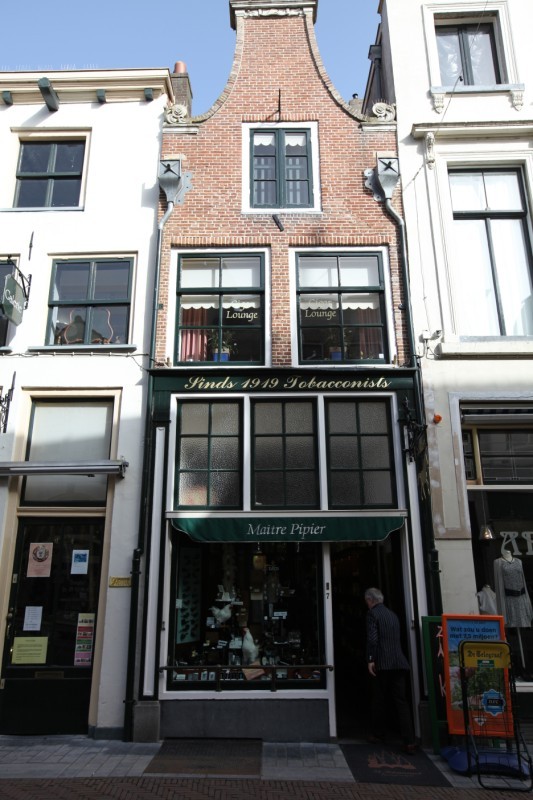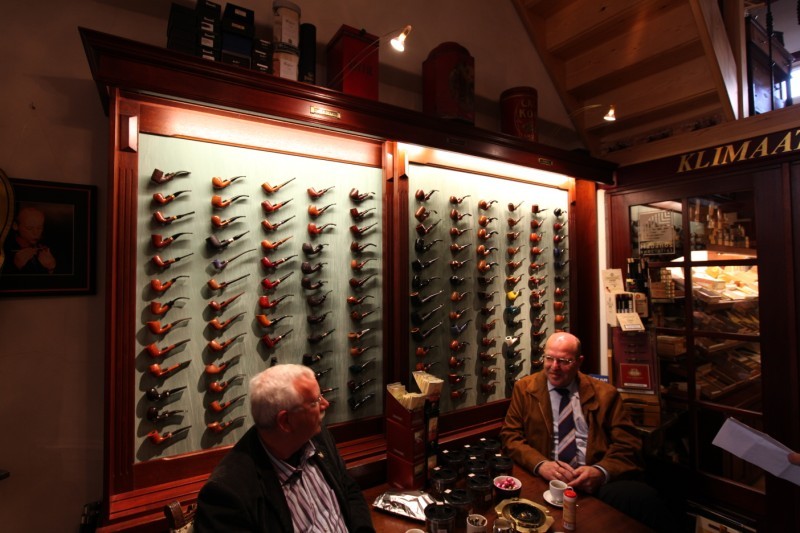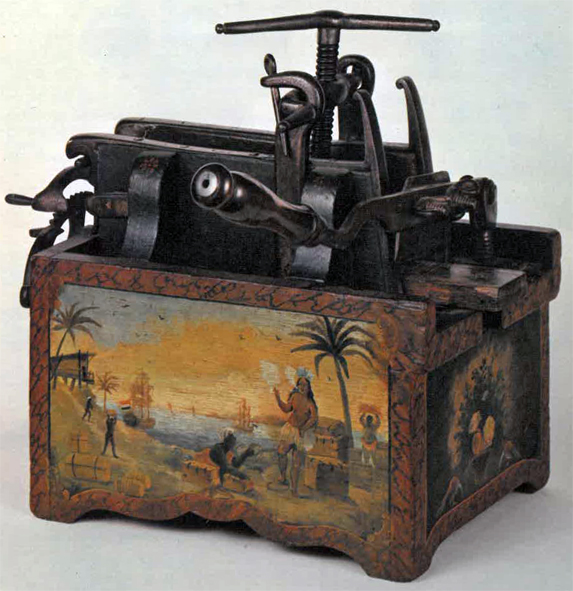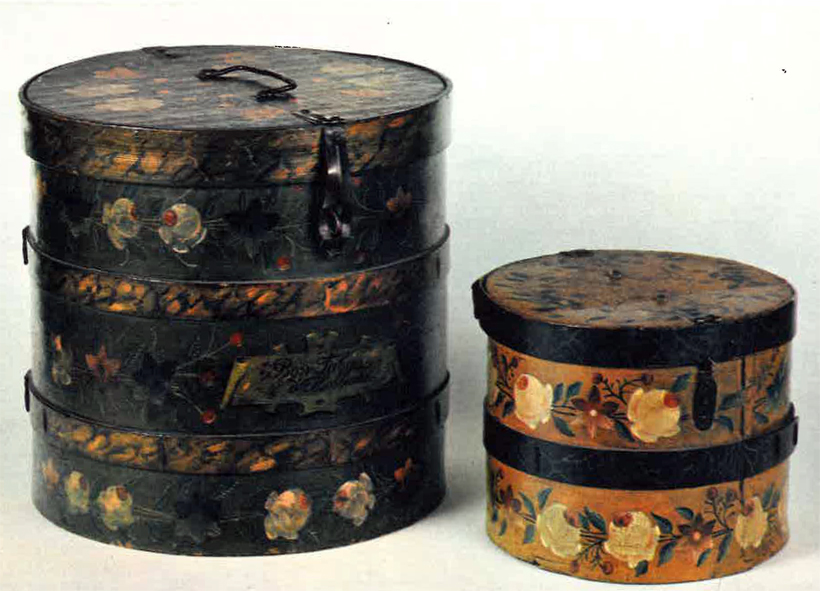On a surprisingly warm October day Ellen and I headed towards to one of the major cities in the province of North-Brabant: Breda. The reason being that my long time colleague Loes was getting married! She and I go back quite some years, she started in the German department of our company and later moved to my department; marketing and communication. Privately I semi-jokingly called her the “iron maiden” because at 31 years old she had not even kissed a guy.. “Try internet-dating!” I said “Perhaps you meet someone, who knows?” Nonono, not her style, blahblahblah.. Until I heard she had a couple of dates with a man and things seemed to go well. “How did you meet him?” I asked. Loes replied with a red face: “Ehmm, through internet..” After that the fresh couple made haste, in just 2 years time both of their houses were sold, a new one was bought, they started living together and got engaged. So the announcement of a marriage in Breda did not surprise me. Good, I thought, an excellent reason to take a day off, stroll through the city and pay a visit to one of the better tobacco shops of The Netherlands: De Compagnie.
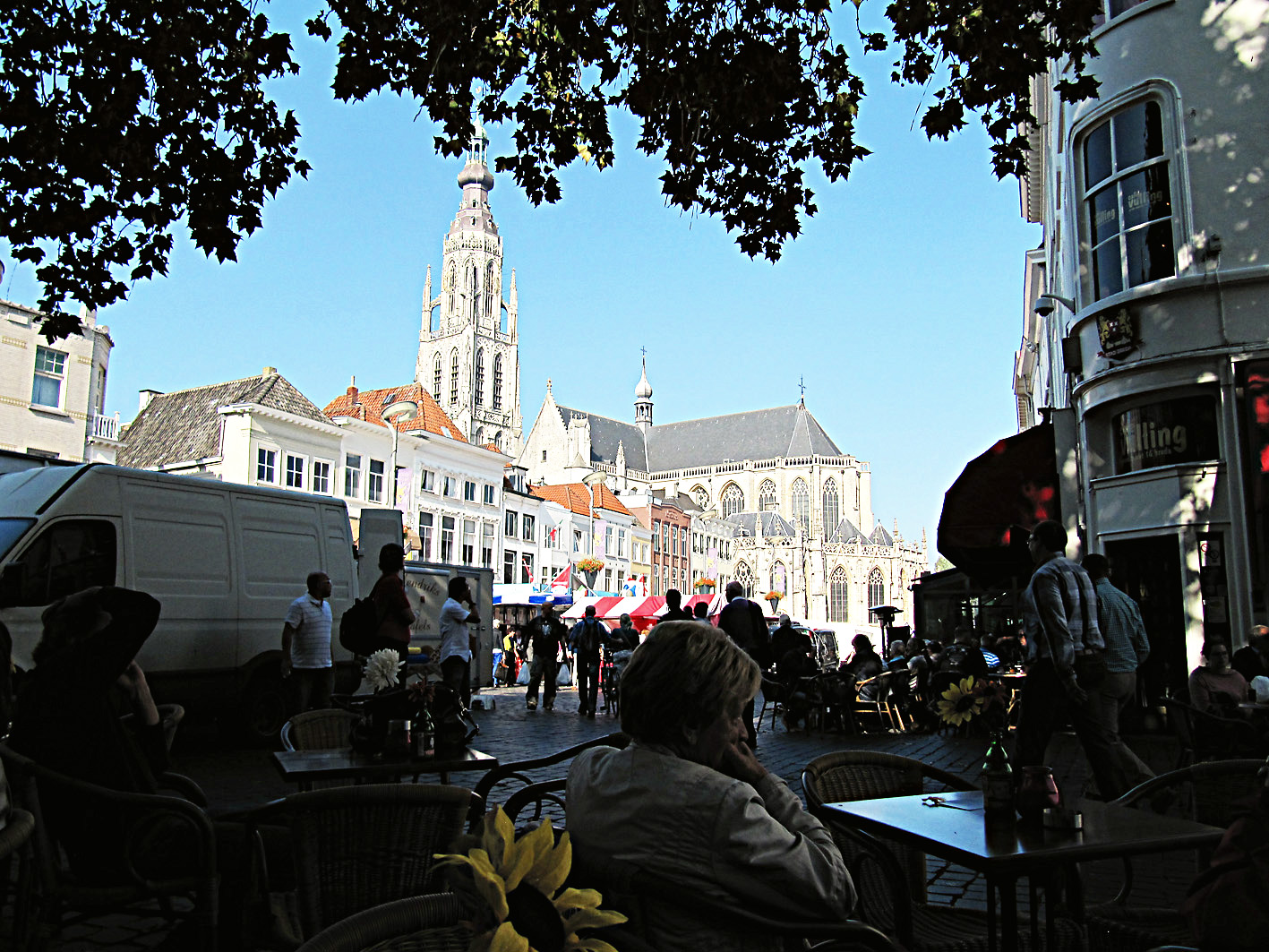 We arrived in Breda at the end of the morning and easily found a parking garage near the old city centre. It was still quiet in the streets until we encountered the weekly market. We did not feel like walking past all the stands so we decided to look for a place to get some coffee. In the heart of the market was a terrace in the shades where we sat down. While Ellen ordered cappuccino for her and a coffee for me I filled up my Dunhill cherrywood with some new Bulldog Roper’s Roundels. Aaahh.. I just love to sit on a terrace on a sunny day with pleasant company, a good drink and a good pipe.
We arrived in Breda at the end of the morning and easily found a parking garage near the old city centre. It was still quiet in the streets until we encountered the weekly market. We did not feel like walking past all the stands so we decided to look for a place to get some coffee. In the heart of the market was a terrace in the shades where we sat down. While Ellen ordered cappuccino for her and a coffee for me I filled up my Dunhill cherrywood with some new Bulldog Roper’s Roundels. Aaahh.. I just love to sit on a terrace on a sunny day with pleasant company, a good drink and a good pipe.
After we finished our drinks we went for a stroll through the city. Ellen had to shop for some clothes (women…) but that was the price I had to pay for our later visit to De Compagnie. Luckily she soon found a nice pink ensemble in which she looked dashing. When we came out of the store our bellies were grumbling, time to have some lunch. We walked towards the Grote Kerk (Big Church), the most important monument and landmark of Breda. Alongside the big building we found a café with big wooden benches in front of it where we sat down. I looked at the menu and yummie, they had some bock-beers! So I ordered a Texels bock, for Ellen a glass of rosé and for the both of us something to eat. By the way, my pipe with the Bulldog Roper’s Roundels was still going strong! It still amazes me how long this kind of tobacco lasts.
Also beside the church tobacco shop De Compagnie, run by John Bodar and his wife, is located in a stately building. Well, tobacco shop.. They have more than that. De Compagnie sells the (for me) classic trinity: tobacco, (home roasted) coffee and tea. Which was the reason that Ellen came along with me. Normally she prefers to go somewhere else when I visit a tobacconist because it is just not her thing. When you enter the large store the coffee and tea products are on the left. To the right you see all kinds of cigars, cigarettes, pipe tobacco, pipes and water-pipes. In the back of the shop is a cigar climate-room with a bit alongside it a small but classy smokers lounge.
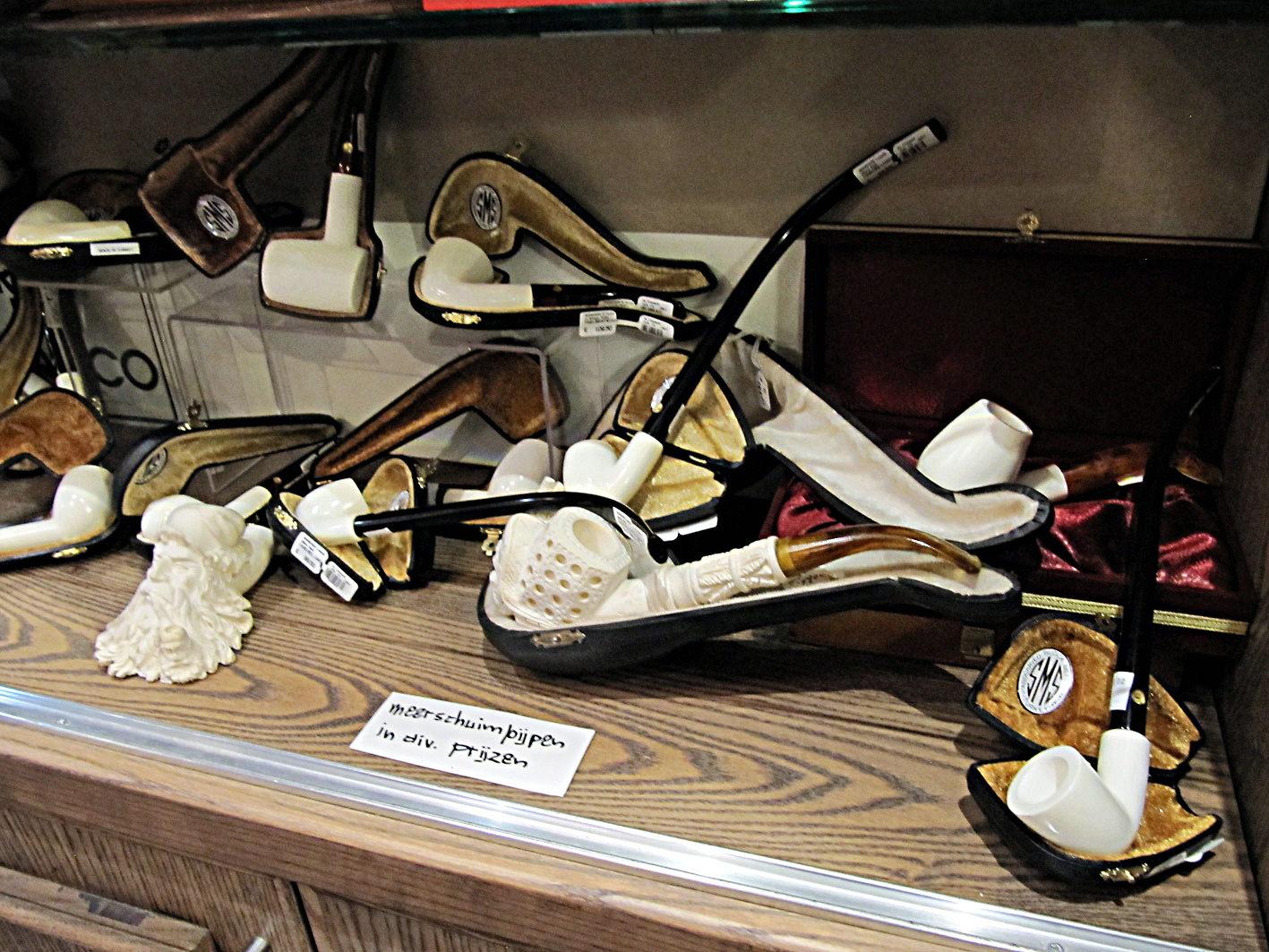 As far as pipes go De Compagnie has a vast assortment, one of the larger I have seen so far in The Netherlands. From cheap to expensive, lots of brands and what I really liked were the many meerschaum and clay pipes. Normally one does not see many of those pipes in tobacco stores here in The Netherlands. But De Compagnie even still has some clay pipes from no longer made brands like Zenith. I knew that before because at the beginning of this year I bought a stunning Zenith Sultan clay-pipe at their online shop. Owner John Bodar even send a lighter and a nice postcard of Breda with it!
As far as pipes go De Compagnie has a vast assortment, one of the larger I have seen so far in The Netherlands. From cheap to expensive, lots of brands and what I really liked were the many meerschaum and clay pipes. Normally one does not see many of those pipes in tobacco stores here in The Netherlands. But De Compagnie even still has some clay pipes from no longer made brands like Zenith. I knew that before because at the beginning of this year I bought a stunning Zenith Sultan clay-pipe at their online shop. Owner John Bodar even send a lighter and a nice postcard of Breda with it!
Talking about owner John Bodar, when I was looking at the pipes assortment he came to me. An elderly, calm and thoughtful man. We shook hands and started talking about his business, tobaccos and pipes and he showed me some of his wares. To my relief it soon became clear that he knew what he was talking about, a man who knows the products he is selling. This because I’ve encountered several tobacconists in The Netherlands who barely knew what they were talking about.. After we chatted for a while I looked over my shoulder and saw Ellen patiently sitting on a chair. She had bought some (surprisingly) tasty Twinings green tea and Ethiopian coffee and was waiting for me to stop talking with Mr Bodar. So I rounded off the conversation and bought a tin of Planta Danish Black Vanilla (ignore the bad reviews, it is good stuff) and a bottle of liquid for my Lampe Berger. I asked Mr Bodar if I could send him some more questions per mail. Of course that was possible and below are those questions and his answers.
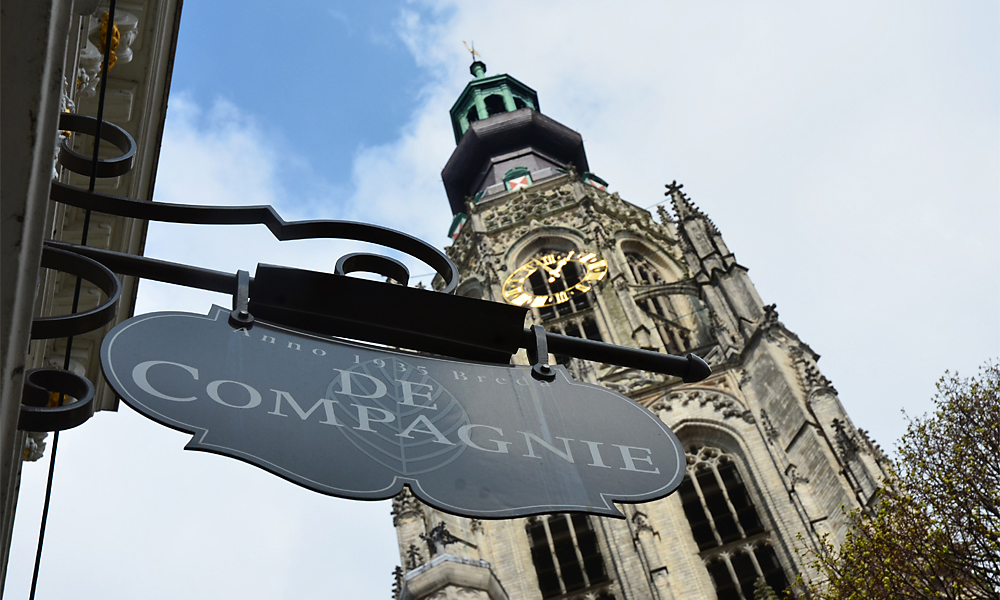 1. Can you tell me something about the history of the store?
1. Can you tell me something about the history of the store?
In 1935 my grandparents started a shop in comestibles with coffee, tea and tobacco in the Nieuwe Haagdijk in Breda. The shop ran well and was moved to the Karrestraat. Obviously my mother assisted them in the store. In 1900 my great-grandparents had a cigar-factory in Den Bosch. There their son (my grandfather) began a cigar-store on the market. Unfortunately in the 1930’s the factory was closed because it could not compete with the grand-scale manufacturing of larger companies. After WWII my father started a pipe-wholesale with amongst others the brands Hilson and Speedway. The parents of my mother were regular customers and this way he met my mother. After that my father settled in our current building, Torenstraat 15 in Breda. My grandparents decided to sell their store at the Karrestraat in 1955. Their stock and customers were taken over by my parents who converted the Torenstraat building to a shop. In 1989 my wife and I took over the store, expanded the assortment with coffee and tea and changed the name from “Het Pijpenhuis” to “De Compagnie”. The following years the store was expanded and we started with roasting our own coffee in 2003.
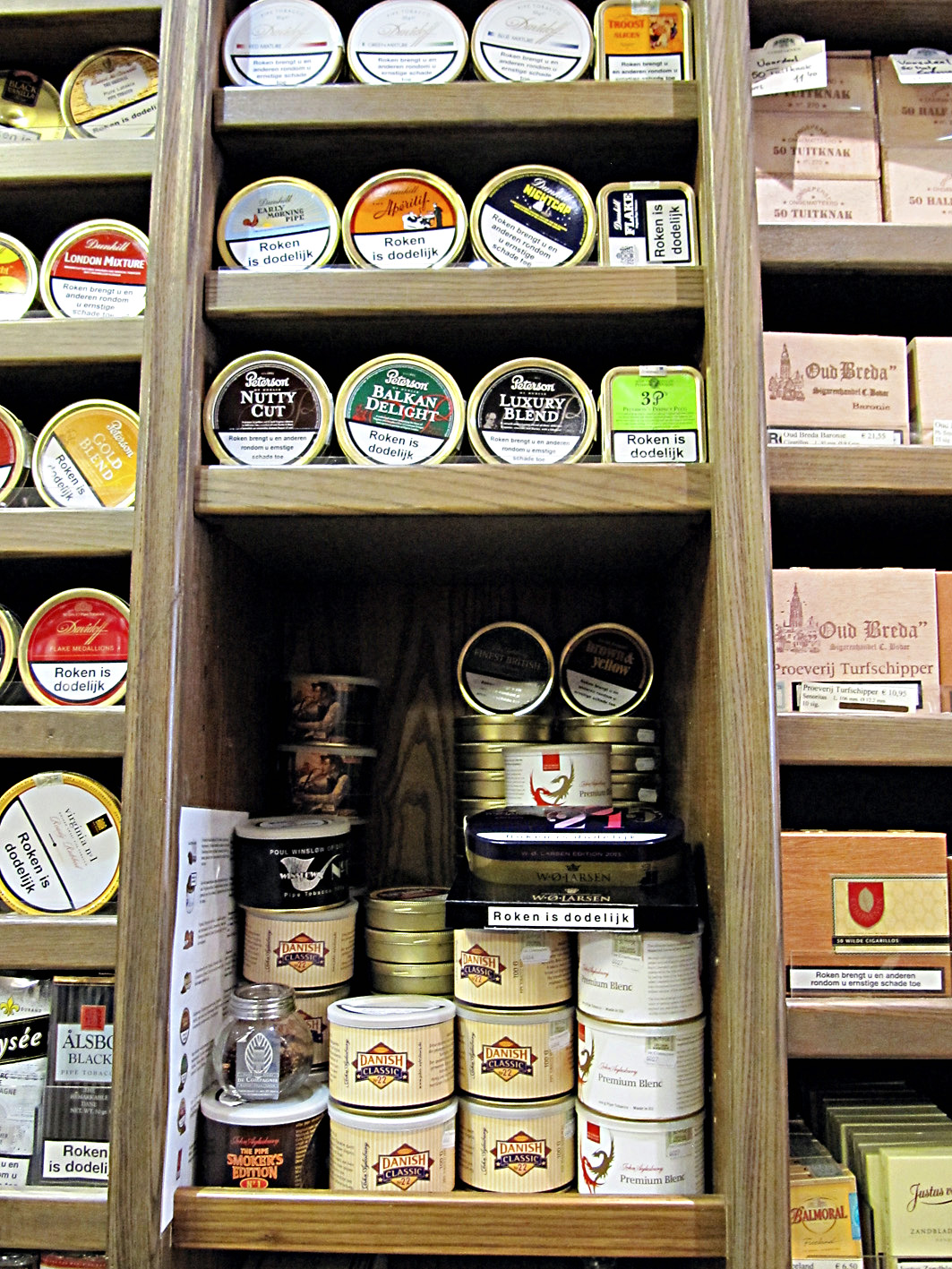 2. What are your most sold pipe-tobaccos?
2. What are your most sold pipe-tobaccos?
The most sold pipe-tobaccos here are the Havezaethe series.
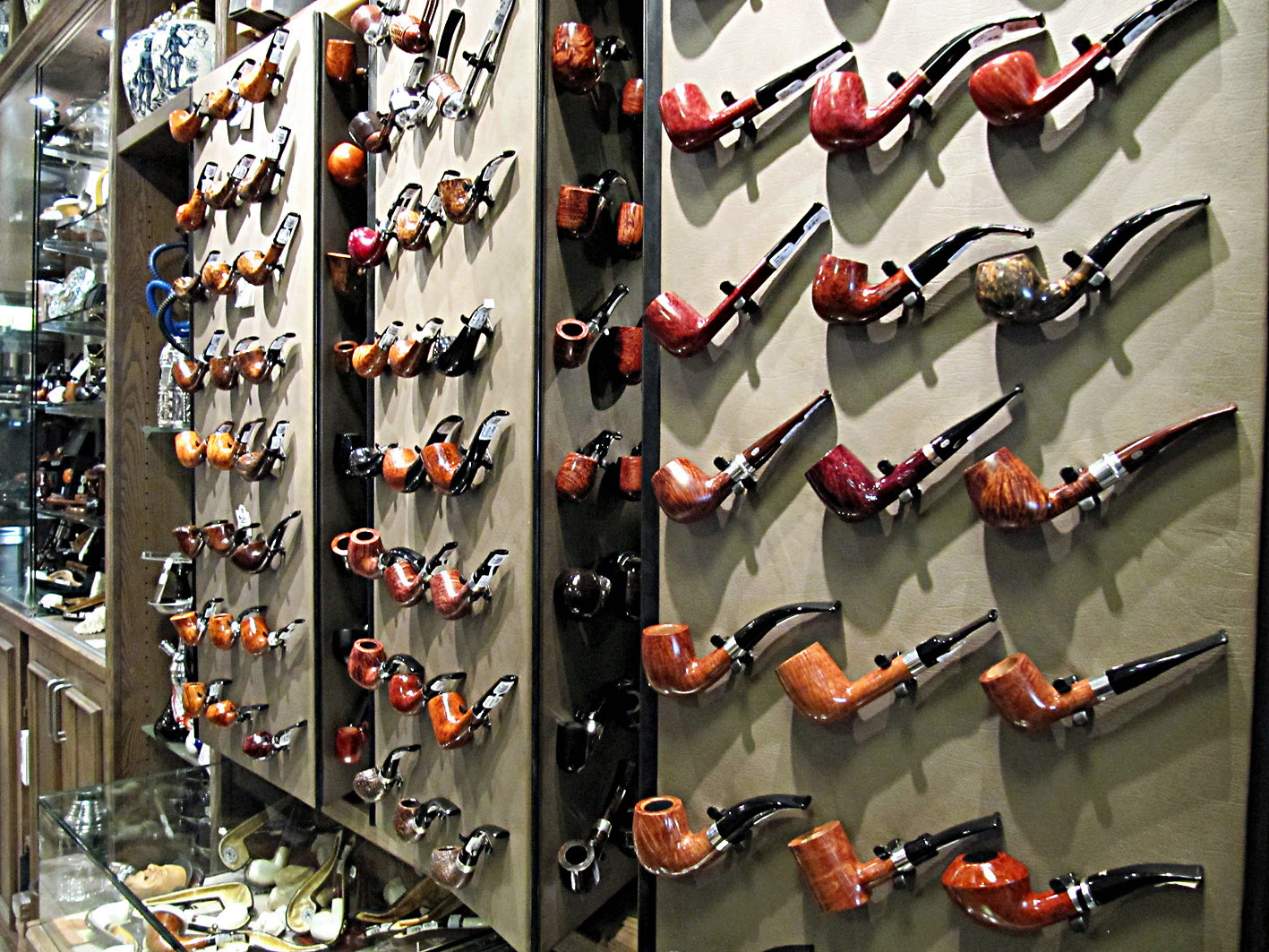 3. What are your most sold pipes?
3. What are your most sold pipes?
Brands that are mostly sold here are Chacom, Peterson and Big Ben.
 4. Do a lot of tourists/casual visitors visit your store or do you have a lot of regular customers?
4. Do a lot of tourists/casual visitors visit your store or do you have a lot of regular customers?
About one third are regular customers who pay a visit about once a month. One third are also regular customers but they come here a few times a year. The last third are tourists, mostly from The Netherlands, who pay a day-visit to Breda and come to take a look what we have got here in the store.
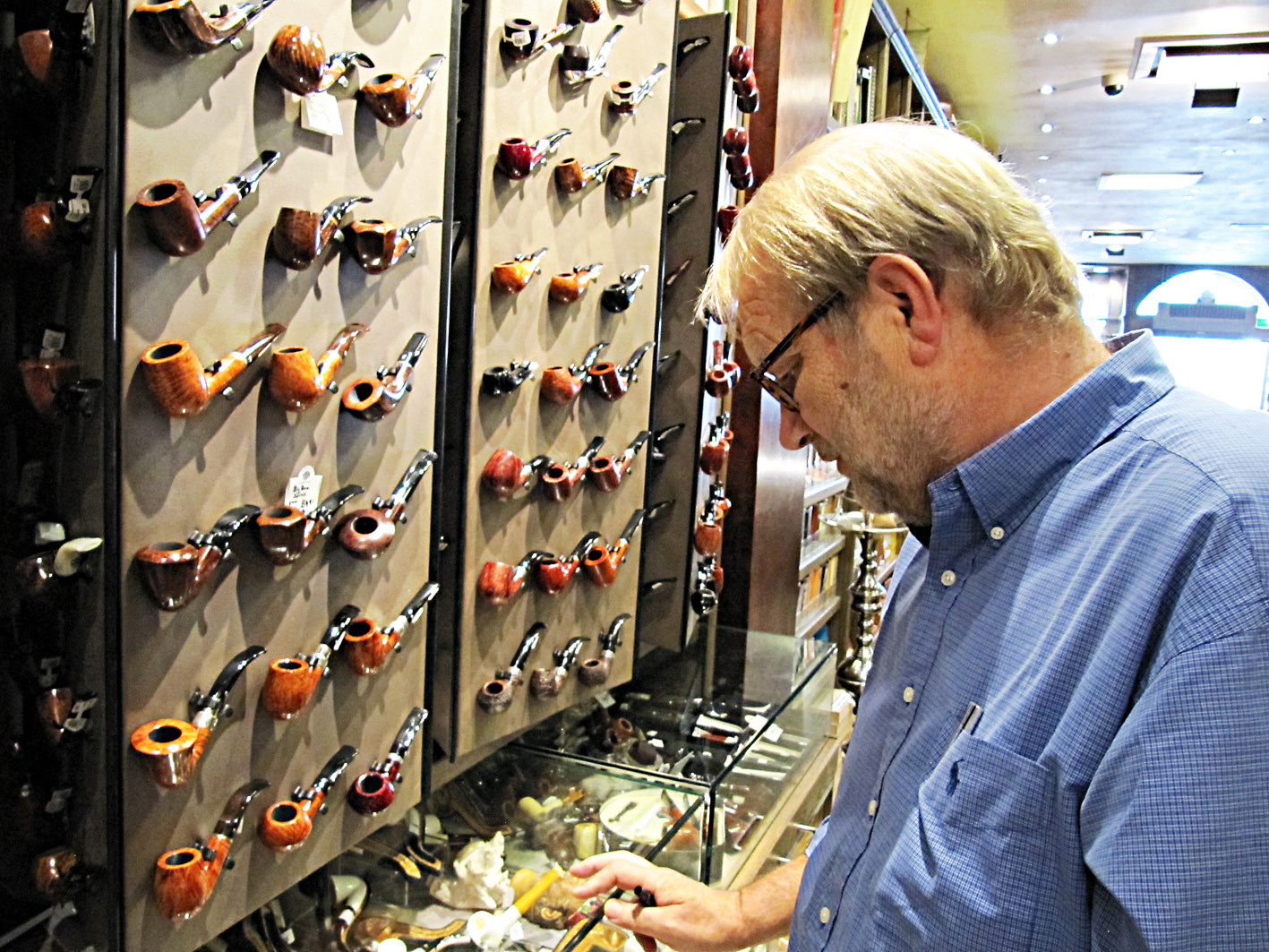 5. Do you notice anything of the anti-smoking feelings/laws? Does it harm your sales?
5. Do you notice anything of the anti-smoking feelings/laws? Does it harm your sales?
The laws have a big impact on smoking in general. Especially the prohibition of smoking in ones workplace makes it for many pipe smokers no longer possible to enjoy their pipe during their work. However, it is a trend that people are more aware of what they smoke, less but better.
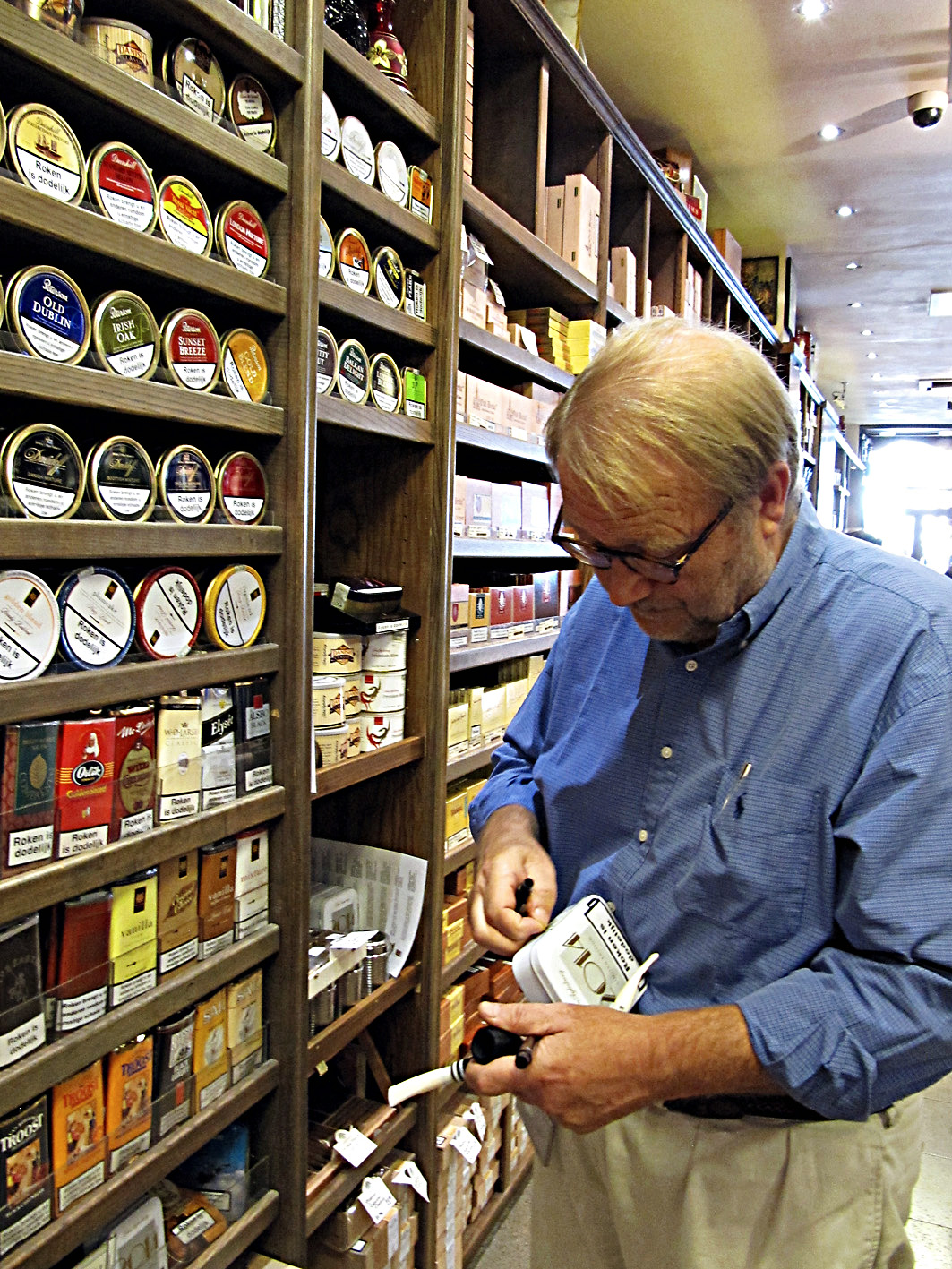 6. What are your favourite pipes and tobacco when you smoke yourself?
6. What are your favourite pipes and tobacco when you smoke yourself?
I regularly smoke from 5 pipes. My favourites are a straight Davidoff and a bend Chacom. I like to try out different tobaccos and rotate them. In the earlier days I was a lover of English blends with latakia, my current favourite is the John Aylesbury Premium Blend.
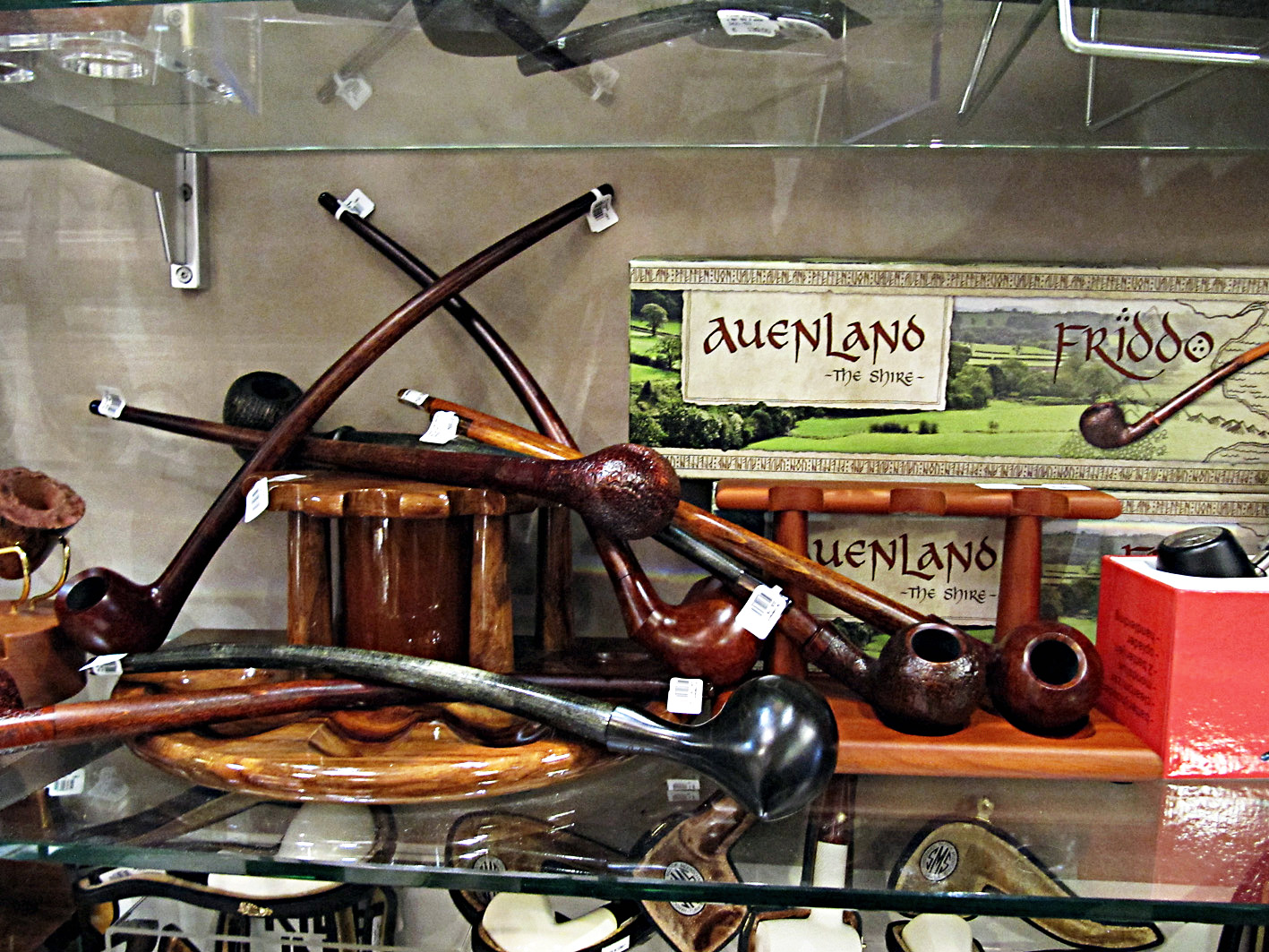 7. Any last words to readers?
7. Any last words to readers?
Smoke consciously and enjoy it, do not smoke out of habit. Rather buy one good pipe than 2 lesser and regularly take care of it.
 The time had come to go to the wedding of Loes when we walked away from De Compagnie. It was held in the old city-hall at the market place which was cleared at that time. Well, only the smell of fish remained.. Loes and her soon to be husband Martijn arrived in a beautiful white old-timer which stopped just before the old city-hall. As they stepped out of the car I could see that she looked amazing and was positively beaming. Once inside the wedding-ceremony started and I would not have missed it for the world. Nice and warm speeches from the civil servant and friends, of course lots of (happy) tears and the most important: they both said “yes”. As a wedding present for the new couple I was thinking of giving them a pipe. Not a normal one, but a wedding-pipe.
The time had come to go to the wedding of Loes when we walked away from De Compagnie. It was held in the old city-hall at the market place which was cleared at that time. Well, only the smell of fish remained.. Loes and her soon to be husband Martijn arrived in a beautiful white old-timer which stopped just before the old city-hall. As they stepped out of the car I could see that she looked amazing and was positively beaming. Once inside the wedding-ceremony started and I would not have missed it for the world. Nice and warm speeches from the civil servant and friends, of course lots of (happy) tears and the most important: they both said “yes”. As a wedding present for the new couple I was thinking of giving them a pipe. Not a normal one, but a wedding-pipe.
![]() For a long time the tobacco pipe had a special meaning about making love, betrothal and marriage. For example, it was a good sign if the lover with his first visit to a girl got offered a pipe and a coal. If he the next time got offered the same pipe it meant he was accepted as a lover. In the 19th century up until WWII in The Netherlands, and especially the provinces of Groningen, Drenthe, Friesland and Overijssel, it was a tradition that the groom was offered a Gouda pipe, the wedding-pipe. Per region the name was different: Bruidegomspijp, bruigomspijp, bruidspijp, bruiloftspijp, breugmanspiep and bruurmanspiepe. This is old-fashioned, but the symbolism of the smoking of the wedding-pipe stands for the subservience of the woman to the man. She has to keep the coals in the fire burning so that man can lit the pipe at any given moment. Besides that the pipe is also a symbol of conjugal fidelity. If the pipe breaks then there surely will be a break-up in marriage..
For a long time the tobacco pipe had a special meaning about making love, betrothal and marriage. For example, it was a good sign if the lover with his first visit to a girl got offered a pipe and a coal. If he the next time got offered the same pipe it meant he was accepted as a lover. In the 19th century up until WWII in The Netherlands, and especially the provinces of Groningen, Drenthe, Friesland and Overijssel, it was a tradition that the groom was offered a Gouda pipe, the wedding-pipe. Per region the name was different: Bruidegomspijp, bruigomspijp, bruidspijp, bruiloftspijp, breugmanspiep and bruurmanspiepe. This is old-fashioned, but the symbolism of the smoking of the wedding-pipe stands for the subservience of the woman to the man. She has to keep the coals in the fire burning so that man can lit the pipe at any given moment. Besides that the pipe is also a symbol of conjugal fidelity. If the pipe breaks then there surely will be a break-up in marriage..
The wedding pipe had a head decorated with an altar of fire, hearts or the image of a married couple. The rest of the pipe was decorated with paper ribbons, garlands and flowers. This creative work was done by the bride and/or her relatives or friends. At the end of the tradition this job often was outsourced to the wife of the local carpenter. Her husband made a beautiful decorated wooden cabinet with a glass window in which the pipe could rest after the wedding.
The customs around the wedding pipe were not a fixed thing, there were variations from region to region. At the evening of the wedding the pipe was presented by a sister of the bride (or the wife of the local carpenter) to the bride. Nervously this rhyme was uttered by her: “Gelijk naar ’s lands gebruik, reik ik u deze pijp. Versierd met lint en rozen, tabak door u gekozen.” (According to the country’s traditions, I offer you this pipe. Decorated with ribbon and roses, tobacco chosen by you). The bride filled the pipe with tobacco, lighted it up and blew some smoke in the face of her husband. Then she gave the pipe to him and he kept smoking out of it for the rest of the evening. During the next weeks he only smoked the pipe six more times after which it was put in the wooden cabinet in the living room. It also occurred that the offering of the pipe did not happen on the wedding day, but on the Sunday preceding it during the period of betrothal. After the announcement in church the family of the bride ate at the family of the groom. On the next Sunday the meal was enjoyed at the family of the bride which consisted of rice with raisins and prunes. That day the wedding-pipe was also offered to the groom.
Sadly Loes and her husband are fanatical non-smokers so I soon abandoned the idea of giving a wedding pipe. After the ceremony Ellen and I walked to the car. Dinner would not be served in Breda but in Sliedrecht, where pipe-smoking friend Klaas and his lovely wife Yvonne live. Klaas wanted to meet Ellen for quite some time so this was the perfect opportunity. We already agreed that dinner would exist of Chinese take-out which is almost a tradition now because of my earlier visits to Klaas. Needless to say we all had a great evening, the Chinese dishes tasted great and the after-dinner pipe even better. Klaas (and of course Yvonne), thank you once again very much for the food and the special gift!

